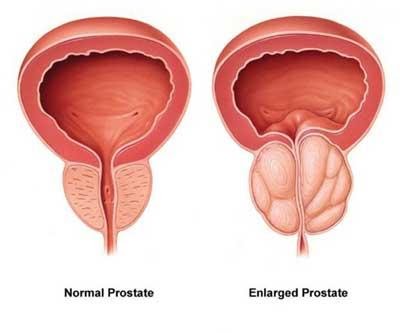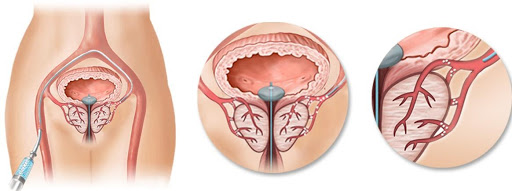Prostate Artery Embolization
What is Benign Prostate Hyperplasia?
Benign Prostate Hyperplasia (BPH) is an enlargement of the prostate. More than 50% of men in older than 60 have BPH. As the prostate gets bigger, it constricts the urethra causing lower urinary tract symptoms (LUTS) such as:

- Urinary frequency
- Dribbling at the end of urination
- Inability to urinate
- Incomplete emptying of bladder
- Incontinence
- Difficulty starting urination
- Weak urinary stream
- Waking up multiple times a night to urinate
How is Benign Prostate Hyperplasia Treated?

Prostate Artery Embolization (PAE) is a minimally invasive procedure that can improve lower urinary tract symptoms caused by BPH with low risk. PAE is performed by an Interventional Radiologist, a doctor who uses X-rays to see inside the body and treat disease without major surgery. PAE is performed through a pinhole incision in your wrist or groin. A catheter is then guided into your prostate artery, the vessel that supplies blood to your prostate. Multiple X-rays are taken with dye to make sure the catheter is in the right spot. Embolization is then performed through the catheter using tiny round microspheres to reduce blood flow to the prostate. The reduction of blood flow will allow the prostate glad to shrink thus relieving lower urinary tract symptoms within 7 days and continue over several months.
What are the benefits of Prostate Artery Embolization treatment?
PAE offers many benefits compared to surgical options offered by Urologists:
- Shorter hospital stay and recovery time
- Low risk of sexual side effects
- Low risk of urinary incontinence
- Shorter urinary catheter time (may be avoided completely)
- Decreased discomfort
Urologists offer transurethral resection of the prostate (TURP) and open prostatectomy which are invasive surgeries that can result in higher rates of ejaculation into the bladder, impotence, and urinary incontinence. PAE has few reports of these complications.
What are the risks and side effects of Prostate Artery Embolization treatment?
The greatest risk comes from embolization away from the prostate artery causing severe complications. PAE is a technically challenging procedure that should only be performed by an experienced Vascular Interventional Radiologist which GLMI offers.
Side effects of PAE may experience post embolization syndrome for up to a week which can include nausea, vomiting, low grade fever, pelvic pain, painful or frequent urination. Other risks include blood in the urine, semen or stool; bladder spasm, or infection.
What can I expect after Prostate Artery Embolization treatment?
Once the treatment is completed, the doctor removes the catheter and applies pressure to the tiny incision in your groin to allow it to heal. You will then lie flat on your back for several hours. Usually, you will be able to go home the same day, but there is a small chance you will be observed overnight and discharged in the morning. During a period of regular follow-up appointments, which can include imaging tests, your doctor will monitor your progress after the therapy.




